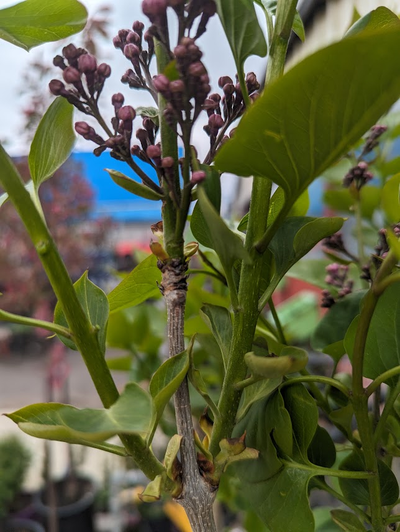Gardening: Drought-tolerant lilacs are a great match for Spokane climate

It’s lilac season in the Inland Northwest.
Urban gardens, vacant lots and even old homesteads in rural areas are filled with the fragrance of lilacs. Our cool weather this spring has allowed them to emerge slowly and is giving us a long season to enjoy them.
Lilacs were a mainstay of early gardens because they stood up to the rigors of transcontinental travel, could survive our harsh winters and were drought tolerant. The perfect plant.
But what happens when they become lanky monsters or just untidy? It’s time for a pruning to get them back to a more manageable size and shape.
Pruning lilacs is a matter of timing. For most common ones, the best time is in the spring right after they finish blooming and start producing new branches. Next year’s flowers will form on this year’s new wood, then overwinter and come out next spring. That means if you prune your lilacs at any other time of the year, you will remove that year’s flowers. Now is that time.
To produce new flowers, within two weeks of the flowers fading this spring, nip off the spent blooms to just above the new buds that should be popping out below the fading flower. Each of these new buds will produce a set of flowers next year. Regular trimming like this will help keep your plant from growing out of bounds and turning into a monster over time.
If your plant or hedge has turned into a lanky, brushy monster, a full renovation is in order. This process will take three years.
This year, after the plant has bloomed, remove most of the small twiggy stems at the base of the plant to the ground. Dig or pull out any suckers that have sprouted outside the main part of the plant if you can. Examine the remaining thick stems and choose a third of the oldest and cut them to the ground.
Next year, remove the second third of the old stems and the last third the following year. Using this system, you will continue to get blooms on the remaining stems while new ones grow in. In three years, you will have a completely new plant. It is not essential that a lilac be pruned, but it helps as they can grow to be 8 to 10 feet tall.
Don’t have a lilac in your yard? Adding one is easy to do, even in a small garden.
Dwarf lilacs grow to about 3 feet tall and wide with flowers in shades of pink and purple often with a spicy fragrance. Varieties include Baby Kim, Minuet and Dwarf Korean. Varieties that grow to about 6 feet include Miss Kim Korean and Josee.
Growing lilacs isn’t hard. They need full sun to bloom well. They grow in almost any soil except dense clay and are drought-tolerant, needing two or three deep soakings during the hottest months. They are deer resistant.